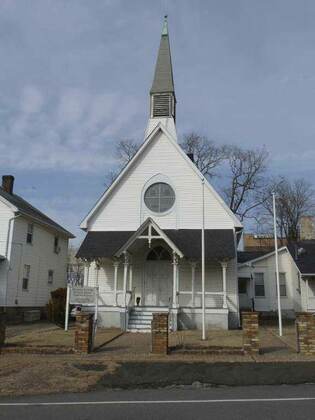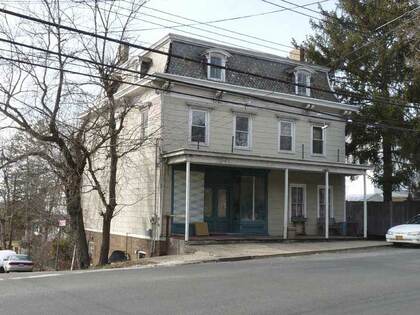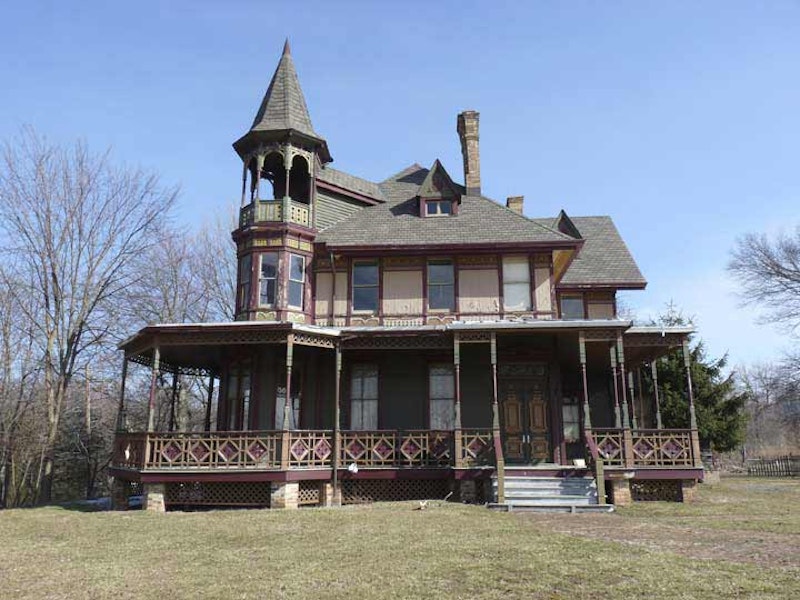About once or twice a year, I’m in south-southwest Staten Island, the southernmost point in New York State. Though “suburbia” long ago made its way into places like Tottenville, Richmond Valley, and Charleston there are still pockets of wilderness and touches of small town life left over. Soon these small patches will be filled in.
When I was in grade school my parents took me on a bus ride out to Tottenville, back when the 69th St. Ferry still connected to the St. George Terminal before the Verrazano-Narrows Bridge was finished in 1964. We boarded an “old-look” General Motors or Mack bus at St. George and traveled on Arthur Kill Rd., which was still a farm-to-market road through wilderness, with a small town or main road here and there.
I didn’t take a bus out to Tottenville again until about 1972 or so, when I was 15. I’d studied my Hagstrom map of the area, which recorded it as fully populated with streets. I still found a wilderness, because like many mapmakers Hagstrom didn’t record conditions as they actually were, but followed official city maps indicating various developments that had yet to be built. I never understood this practice, and Geographia Maps did it a lot better, showing the same streets, but graying out the unbuilt ones. I wish I was carrying a camera everywhere I went, as the southwest Staten Island streetscape was different from what it is now, more rural and unoccupied.
I strode right up next to the Charles Kreischer mansion at Arthur Kill Rd. and Kreischer St. It was unfenced a few years ago when I got this shot; it has been fenced-off since.
Brick king Balthazar Kreischer’s son Charles constructed this grand Victorian Eclectic mansion on 4500 Arthur Kill Rd. in 1885; his brother Edward’s identical building, since demolished, was on the adjoining plot. In the 1990s, it was rumored that George Harrison had expressed an interest in purchasing the mansion, but changed his mind when security concerns became a problem. In the early-2000s the house was completely renovated, but wind and weathering have rendered the place again in need of TLC. The chimneys are made of yellow Kreischer brick (see below).
The mansion has a recent infamous reputation. It was used as a mob-owned restaurant until 1996; in 2008 caretaker Joseph “Joe Black” Young, a hitman employed by the Bonanno crime family, was charged and convicted for the brutal murder of a mob associate in 2005. Over a century earlier, Edward Kreischer committed suicide at the brick factory, and those who believe in ghosts say Edward can be seen roaming the halls of his brother’s mansion.

This multifamily dwelling constructed in 2013 on Arthur Kill R. stands across Kreischer Street from where the Kreischer brick works were located, in what are now woods on the left side of the photo. In 1854, Bavarian immigrant Balthazar Kreischer was building a brick factory in Charleston, Staten Island (Richmond County was not a part of NYC). Because of the clay ground in the area (Clay Pond Park State Preserve is nearby), Kreischer’s was one of several brickmaking firms active in the period. Like Steinway, Kreischer constructed a small company town in this remote corner of Staten Island centered around Arthur Kill Rd. and Kreischer and Androvette Sts. The brick works employed almost 150 and produced 20,000 bricks per day. Kreischerville, as the town was known, was self-contained, with a hotel (still standing at Androvette and Kreischer Sts., now a Knights of Columbus), church, grocery store and inn. The factory closed in 1927. In the aftermath of World War I, many German-sounding names were purged from New York City directories, and so Kreischerville became known as “Charleston.”

On Kreischer St. is a series of modest, two-story dwellings, lining the east side of the street up to Androvette St., with green sidings and white window sashes, and picket fences, some in disrepair. The houses were built around 1890 and leased to workers in the brick factory. I’m not sure when they acquired the green siding; underneath there may be Kreischer yellow brick.

Note the distinctive sidewalks: Kreischer brick, with many of the bricks bearing the company stamp and in a variety of colors and textures. Ninety years after the Kreischer kilns were quieted, this street serves as both a living museum and a product catalog. The buildings are landmarked and so can’t easily be torn down, but the sidewalks are another matter and are very uneven in spots, and a zealous city inspector may someday order them replaced by more conventional pavings.

On the north side of Winant Place at #25 between Kreischer St. and Arthur Kill Rd. is another landmarked structure, the Free Hungarian Reformed Church. This church was originally constructed by the Kreischers in 1883 for a Lutheran congregation, St. Peter’s German Evangelical Lutheran Church. It partially burned down in 1890 but was reconstructed to look like the original. Since 1916, it has been the Free Magyar (Hungarian) Reformed Church. A piece of paper with an apparent handwritten signature of Balthazar Kreischer was recently uncovered in the church. It’s one of the few spots outside the United Nations, and Little Hungary on E. 82nd St., where you could see the Hungarian flag flying in NYC. The exterior brick posts are Kreischers.

The Nicholas Killmeyer grocery at Winant Pl. and Arthur Kill Rd. was built in the 1870s and still bears hallmarks of architectural trends of the decade including a slanted “mansard” roof, fish scale slate shingles with decorative rosettes and brackets, and Kreischer brick chimneys. Until recently there was still a grocer operating on the ground floor. Killmeyer supplied much of the village with comestibles and also ran a roadhouse/hotel up the road a bit at Sharrotts and Arthur Kill Rds.

Here’s the reason many outsiders visit this southern Staten Island redoubt. This vintage German-style beer garden at 4254 Arthur Kill Rd. at Sharrotts Rd. was built by Nicholas Killmeyer and used initially as a grocery and residence by John Batchelor in 1845. By the 1880s, an addition was built and it became a roadhouse and tavern called Killmeyer’s Union Hotel.

Now known as Killmeyer’s Old Bavaria Inn, it boasts its original bar and pressed tin ceiling, a menu full of sauerbraten, braunschweiger and other German cuisine, and dozens of brands of German beer such as Spaten. Oompah and pop bands play on Sunday afternoons and rock bands play the beer garden in the back on summer evenings. I’ve spent many happy hours here and brought a tour by in 2017.
—Kevin Walsh is the webmaster of the award-winning website Forgotten NY, and the author of the books Forgotten New York (HarperCollins, 2006) and also, with the Greater Astoria Historical Society, Forgotten Queens (Arcadia, 2013)

